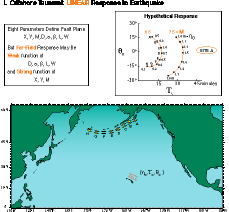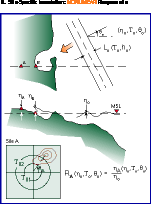 |
||
|
Vasily Titov, Harold Mofjeld, Frank González, Eddie Bernard and Jean Newman, PMEL Goal Use numerical models and analyses of observed tsunamis to develop faster and more reliable forecasts |
||
 |
||
|
Vasily Titov, Harold Mofjeld, Frank González, Eddie Bernard and Jean Newman, PMEL Goal Use numerical models and analyses of observed tsunamis to develop faster and more reliable forecasts |
||
 |
Future Directions
Real-Time Forecasting
• The MOST model will be used to perform multiple-run sensitivity
studies of two closely related, but separable, processes-offshore wave dependence on distant earthquake magnitude and position, and site-specific inundation dependence on offshore wave characteristics. • The results will be organized into an electronic database, and
associated software will be developed for analysis and visualization of this database, including the assimilation of real-time data streams; the goal is to provide guidance for forecasting and hazard assessment during actual tsunamis. • Depending on the results of sensitivity studies, it may be feasible to use a supercomputer version of the MOST model to perform real-time computations for emergency guidance during tsunamis Funding support provided by NOAA/OAR, DOD/DARPA and DOD/DUSD(S)
PMEL 1998 Program Review - http://www.pmel.noaa.gov/programs/98prog-agenda.html |
 |